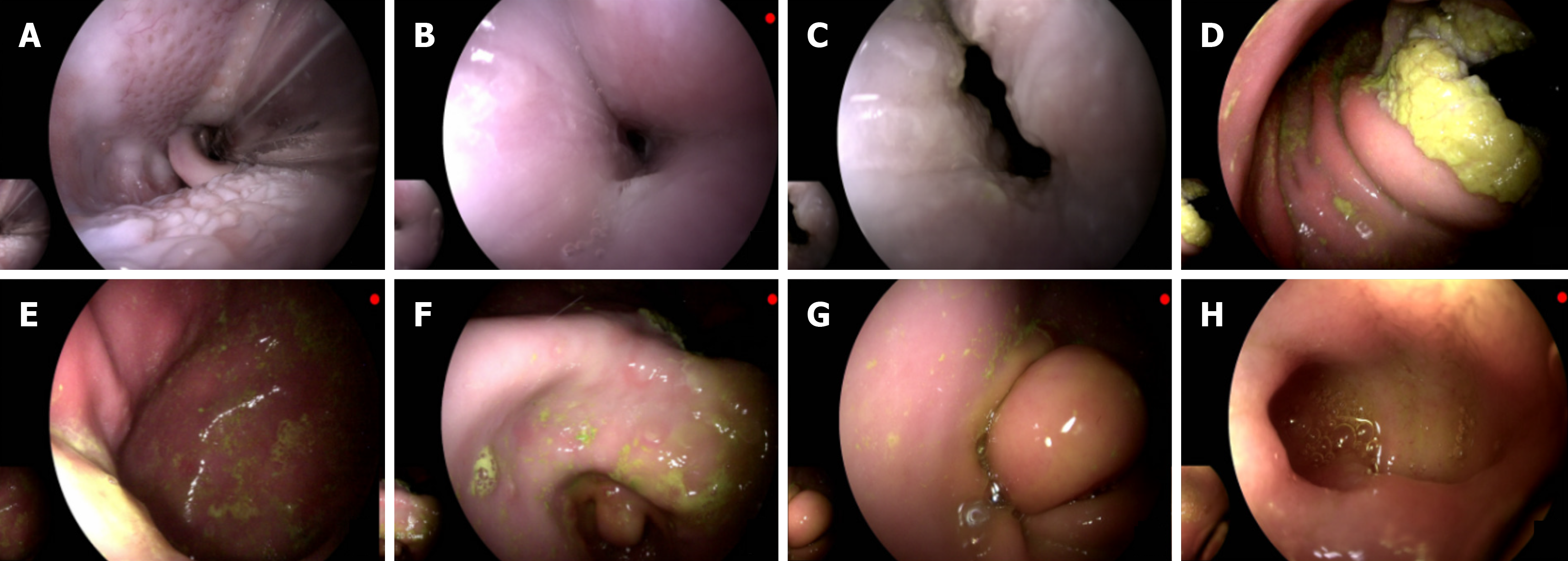Copyright
©The Author(s) 2025.
World J Gastrointest Surg. Jul 27, 2025; 17(7): 105503
Published online Jul 27, 2025. doi: 10.4240/wjgs.v17.i7.105503
Published online Jul 27, 2025. doi: 10.4240/wjgs.v17.i7.105503
Figure 2 Endoscopic image obtained by the portable disposable large-channel endoscope system.
A: Oropharynx. This area is the initial part of the digestive tract examined during gastroscopy. Clear visualization of the oropharynx is crucial as it can help detect any abnormalities such as inflammation, tumors, or structural defects; B: Esophagus. The esophagus is a key passage for food and liquid transport. Endoscopic examination of the esophagus can identify conditions like esophagitis, esophageal varices, or early-stage cancers. The clear and sharp image of the esophagus obtained by the portable disposable large-channel endoscope system allows for accurate diagnosis; C: Esophagogastric junction. This is the transition area between the esophagus and the stomach. It is an important site for detecting gastroesophageal reflux disease, Barrett's esophagus, and some types of cancer. The image integrity and quality at this junction are essential for proper diagnosis; D: Gastric fundus. The gastric fundus is the upper part of the stomach. It stores food temporarily and plays a role in the initial digestion process. Observing the gastric fundus can help diagnose diseases such as gastric polyps or gastric ulcers; E: Gastric body. The gastric body is the main part of the stomach where most of the digestion and absorption processes occur. Endoscopic evaluation of the gastric body can detect various diseases, and the high-quality image from the endoscope helps in accurate assessment; F: Gastric angle. The gastric angle is a critical anatomical structure for endoscopic examination. It can be a challenging area to visualize clearly, but the portable disposable large-channel endoscope system provides clear images, facilitating the detection of any lesions or abnormalities; G: Gastric antrum. The gastric antrum is involved in the mixing and propulsion of food in the stomach. Abnormalities in this area, such as gastritis or tumors, can be detected through endoscopic images; H: Duodenum. The duodenum is the first part of the small intestine. Endoscopic examination of the duodenum can help diagnose conditions like duodenal ulcers, duodenitis, and some types of tumors. The high-quality images obtained by the endoscope system contribute to accurate diagnosis and treatment planning.
- Citation: Zhao CY, Ning B, Feng XX, Li HK, Zhang WG, Dong H, Chai NL, Linghu EQ. Comparison of a portable disposable large-channel gastroscope and a conventional reusable gastroscope in gastric endoscopic submucosal dissection. World J Gastrointest Surg 2025; 17(7): 105503
- URL: https://www.wjgnet.com/1948-9366/full/v17/i7/105503.htm
- DOI: https://dx.doi.org/10.4240/wjgs.v17.i7.105503









